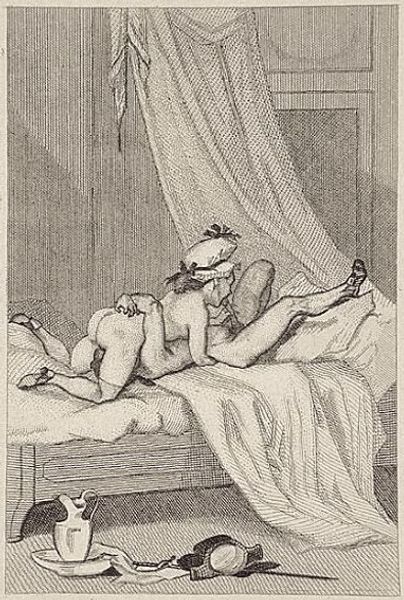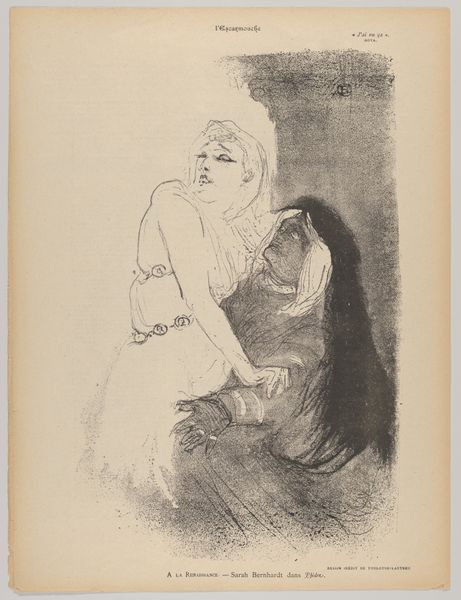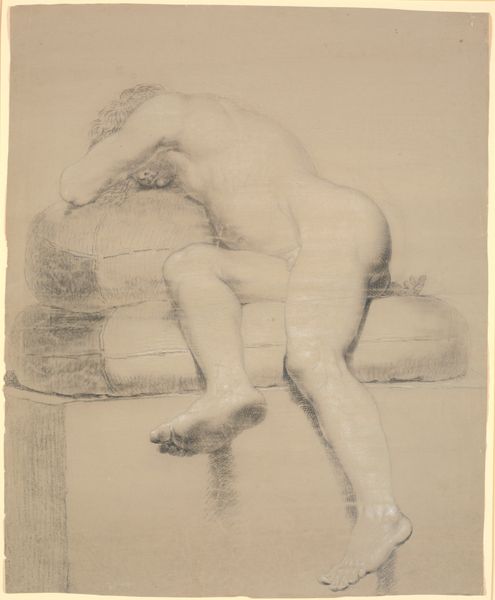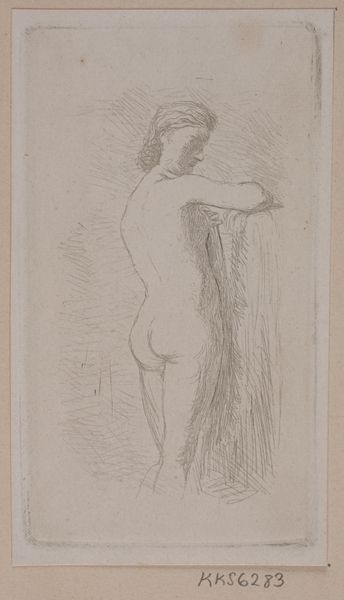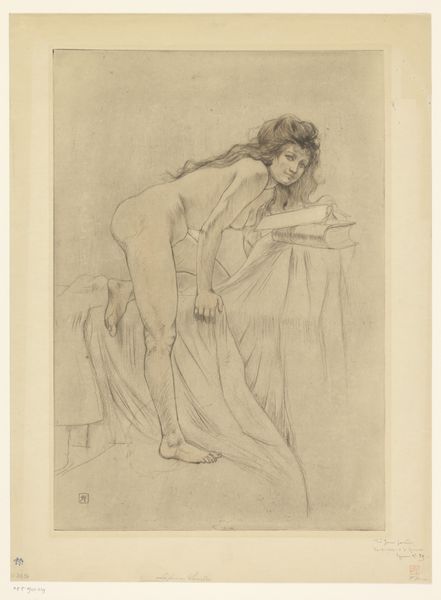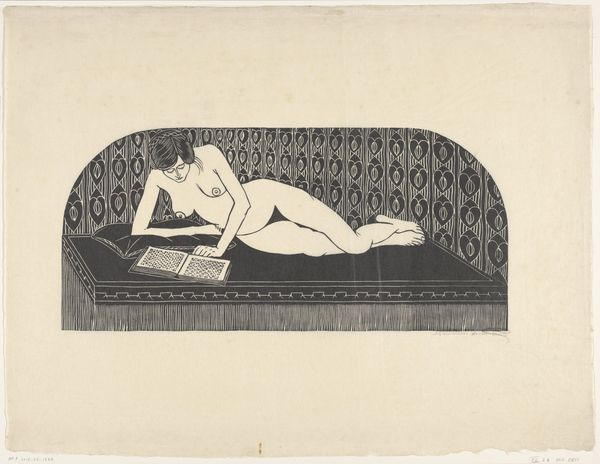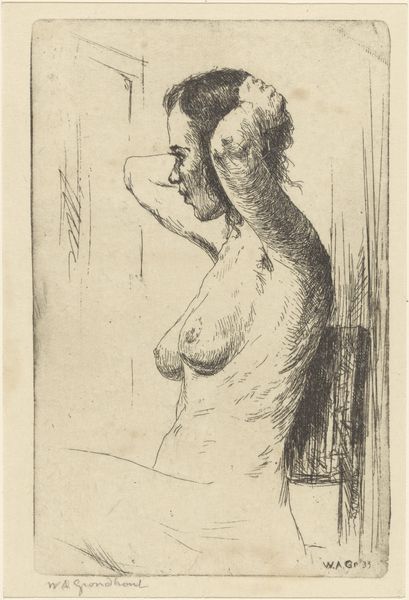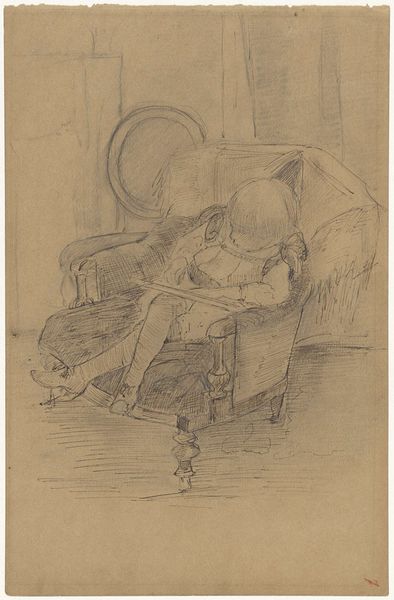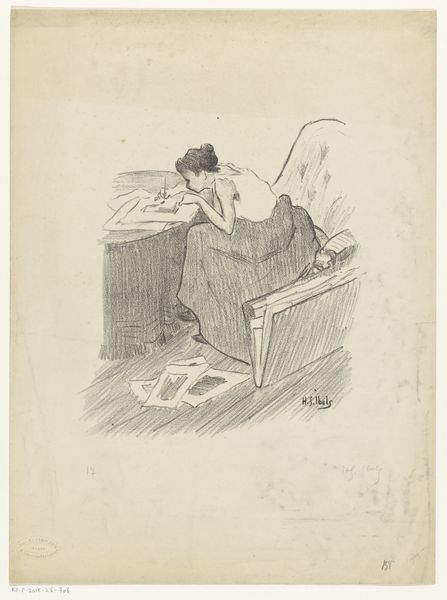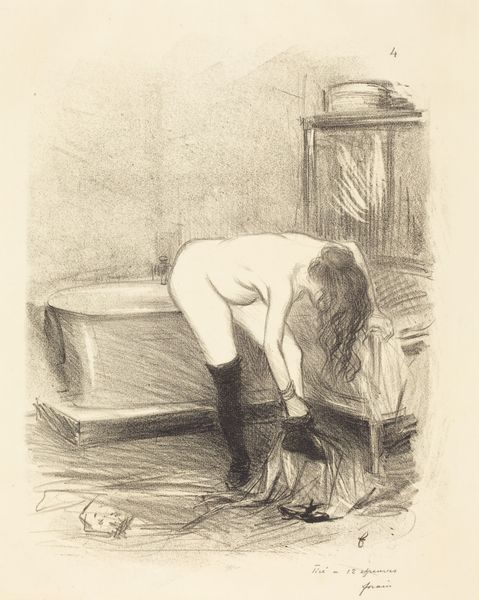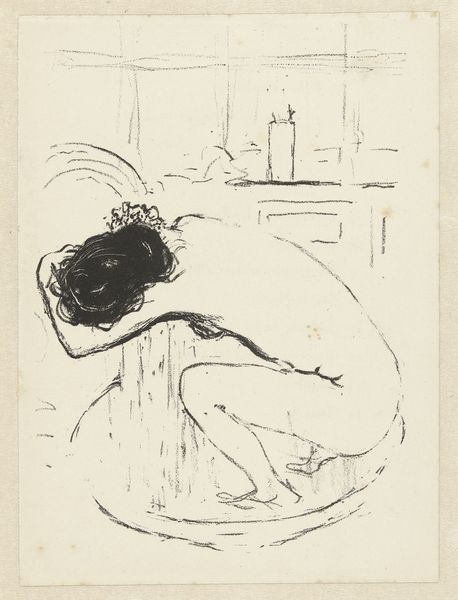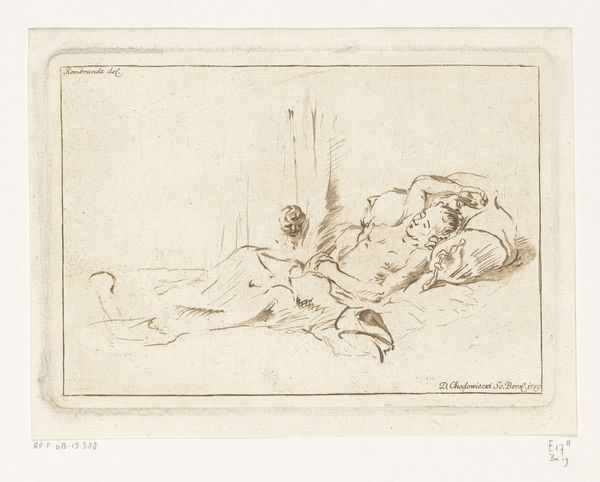
Nøgen kvinde med gevandt set bagfra, foran en fontæne 1796
0:00
0:00
drawing, etching
#
drawing
#
neoclacissism
#
etching
#
etching
#
academic-art
#
nude
Dimensions: 214 mm (height) x 168 mm (width) (bladmaal)
Curator: It's interesting how quickly a visual language becomes commonplace. Take, for instance, this 1796 etching by Johannes Wiedewelt titled "Nøgen kvinde med gevandt set bagfra, foran en fontæne," or "Nude woman with garments seen from the back, in front of a fountain". Wiedewelt, better known for his sculptures, especially in the royal gardens, uses the same formal language here as in his monumental works. Editor: Immediately, I sense a stillness. The pale sepia tones, the receding figure... it almost feels like we're intruding on a private moment. The hard lines creating her figure is in stark contrast with the flow of the water and draped cloth. It is quite striking. Curator: Intrusion, perhaps, but also idealization. This rendering of the female nude fits perfectly within the Neoclassical ideals that were gaining popularity at the time—recalling classical sculpture with a contemporary sentimentality. The fountain, in its idealized form, serves both as background and emblem. The architecture framing the scene lends an academic authority that permeates the period’s public role of art and socio-political image. Editor: True, the classical elements create distance. But even so, there’s a definite softness in how Wiedewelt renders the figure, particularly the curve of her back and the drape of the cloth. I get a feeling of subdued, sensual pleasure from the fountain water, the smooth urn...it is far more interesting than its objective elements reveal. Curator: Well, perhaps this tension highlights the moment's inherent contradictions. Neoclassicism tried to recapture an idealized past while negotiating the present. And, certainly, there is psychological weight imbued in its symbols, as well as emotional longing, perhaps? This approach also carries an influence of Academic Art of the time. Editor: Agreed. Perhaps its contradictions is why it draws the eye, still, after two centuries. It captures a brief and complex moment, a convergence of style, power, and cultural memory. Curator: Exactly. Wiedewelt’s rendering prompts one to reevaluate our understanding of beauty, propriety, and power, even today.
Comments
No comments
Be the first to comment and join the conversation on the ultimate creative platform.
